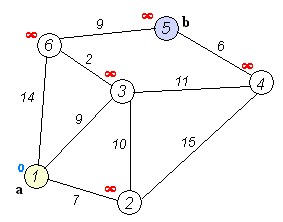Artificial intelligence (AI) is rapidly transforming our daily lives, often without us even realizing it. From the moment you wake up to when you go to bed, AI is working behind the scenes to make things easier, faster, and more efficient. This article explores practical examples of how AI and machine learning (ML) are already being used in everyday situations, categorized into Work & School and Home applications.
AI in Work and School
Commuting
AI is tackling the complexities of transportation to reduce commute times.
-
Google Maps: Leveraging anonymized location data from smartphones and user-reported incidents, Google Maps analyzes traffic flow to suggest the fastest routes.
-
Ridesharing Apps (Uber and Lyft): Machine learning algorithms determine ride prices, minimize wait times, optimize passenger matching, and predict rider demand to eliminate surge pricing.
-
Commercial Airline Autopilots: AI autopilots have been used in commercial airlines for decades, handling the majority of a flight with human intervention primarily limited to takeoff and landing.
-
Spam Filters: Machine learning algorithms analyze various signals, including message content and metadata, to continuously learn and adapt to evolving spam techniques, personalizing filtering based on individual user preferences.
-
Smart Email Categorization: AI powers the categorization of emails into different inboxes (primary, social, promotions) and labels important messages, learning from user interactions to improve accuracy.
Grading and Assessment
-
Plagiarism Checkers: Machine learning aids in detecting plagiarism by analyzing stylistic factors in student writing, even from sources not found in traditional databases.
-
Robo-readers: AI-powered systems are used in conjunction with human graders to assess essays, combining the strengths of both to improve efficiency and reduce costs.
Banking and Personal Finance
-
Mobile Check Deposits: AI and ML enable mobile check deposit functionality by deciphering handwriting on checks and converting it into text using optical character recognition (OCR).
-
Fraud Prevention: AI systems learn to identify fraudulent transactions by analyzing various factors like transaction frequency, size, and retailer type, minimizing losses for financial institutions.
-
Credit Decisions: Machine learning plays a crucial role in determining creditworthiness, assessing individual customer risk, and setting loan terms, ultimately impacting access to credit.
AI in the Home
Social Networking
-
Facebook: AI powers facial recognition in photos, personalizes newsfeeds, targets advertisements, and understands text content through its DeepText engine for various applications.
-
Pinterest: Computer vision, an application of AI, enables Pinterest to identify objects in images and recommend visually similar pins, enhancing user experience and discovery.
-
Instagram: Machine learning helps Instagram understand the contextual meaning of emojis, enabling auto-suggestions and providing insights into user behavior.
-
Snapchat: AI-powered facial tracking allows for the creation of interactive and dynamic filters (Lenses) that respond to users’ facial movements.
Online Shopping
-
Search: AI algorithms analyze search queries and learn from past patterns to provide relevant product results on platforms like Amazon.
-
Recommendations: Machine learning generates personalized product recommendations, significantly influencing purchasing decisions and driving sales for online retailers.
-
Fraud Protection: AI is crucial in preventing fraudulent credit card transactions online, minimizing losses for both merchants and consumers.
Mobile Use
-
Voice-to-Text: Artificial neural networks enable accurate voice-to-text conversion, making it a standard feature on smartphones and powering voice search capabilities.
-
Smart Personal Assistants: AI assistants like Siri, Google Assistant, Alexa, and Cortana utilize voice recognition and natural language processing to perform various tasks, answer questions, and control smart home devices.
Conclusion
These examples demonstrate how AI and machine learning are already pervasive in our lives, impacting various aspects of our daily routines. As AI technology continues to advance, its integration into our everyday experiences will only deepen, promising even more transformative changes in the future. AI is not just a futuristic concept; it’s a present reality shaping how we live, work, and interact with the world around us.

